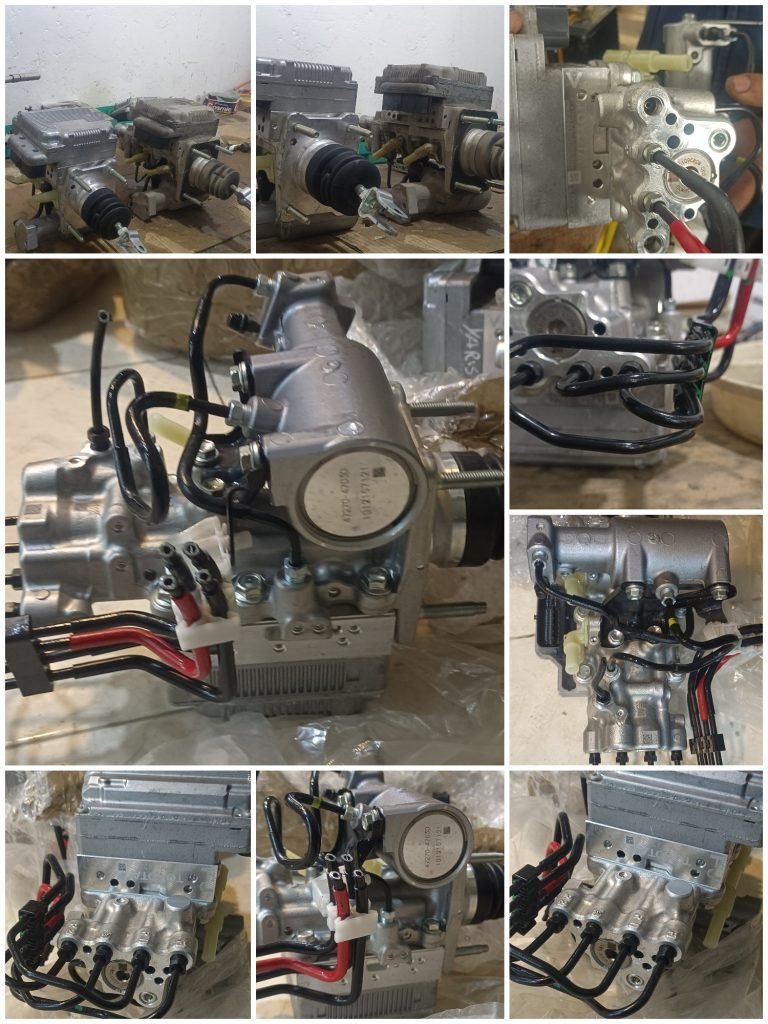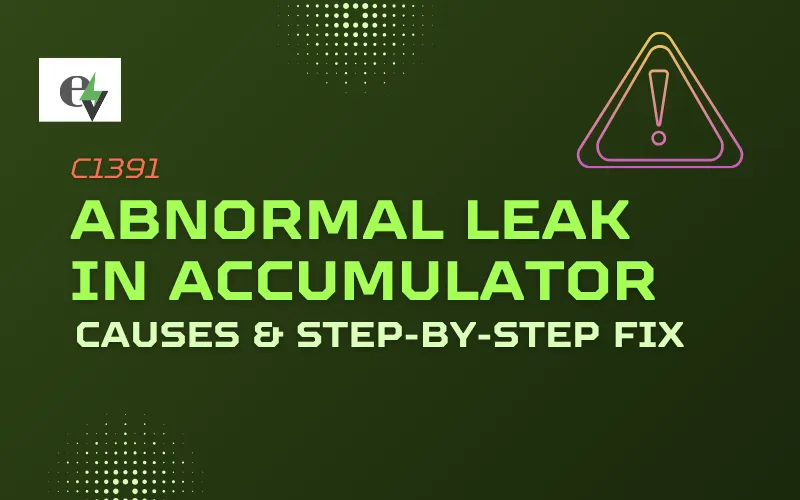What Does DTC C1391 Indicate?
The Diagnostic Trouble Code (DTC) C1391 in Toyota vehicles signals a potential issue with the brake accumulator pump. Specifically, it highlights a leakage in the accumulator pump motor supply voltage. This issue can compromise the functionality of the Anti-lock Braking System (ABS), which is crucial for vehicle safety and performance.
Causes of DTC C1391 in Toyota
Identifying the root cause of C1391 is key to resolving the issue. Common causes include:
1. Faulty Brake Accumulator Pump
-
The motor driving the brake accumulator pump may be malfunctioning, stuck, or damaged, triggering the error code.
-
Pressure inconsistencies in the ABS actuator can also contribute to the issue.
2. Electrical Issues in Power Supply Circuit
-
Loose wiring connections or damaged wires in the power supply circuit can cause voltage drops and lead to the activation of DTC C1391.
-
Corroded electrical terminals may disrupt the flow of power to the pump.
3. Low Brake Fluid Level
-
-
Insufficient brake fluid may prevent the brake accumulator pump from functioning correctly, triggering the error code.
-
Leaks in the brake fluid reservoir or brake lines can also contribute to the problem.
-
How to Fix DTC C1391 in Toyota?
To resolve the C1391 error code, follow these steps:
1. Professional Diagnosis
-
Consult a qualified automotive technician or a Hybrid EV Engineering center for a detailed inspection.
-
Utilize specialized diagnostic tools to pinpoint the exact issue.
2. Inspect Wiring and Connections
-
Check for damaged or loose wires connected to the brake accumulator pump motor.
-
Ensure electrical connections are clean and corrosion-free.
3. Check Brake Fluid Level
-
Verify that the brake fluid level is within the recommended range.
-
If the fluid level is low, check for leaks and top up with Toyota-approved brake fluid.
4. Repair or Replace Components
-
If the wiring and fluid levels are in good condition but pressure inconsistencies persist, replacing the ABS unit or brake accumulator pump may be necessary.
-
Ensure installation follows OEM (Original Equipment Manufacturer) standards to prevent future failures.
ABS Accumulator Leak: Causes and Prevention
An ABS accumulator leak can also lead to brake system failures. Here are common reasons:
Potential Causes of ABS Accumulator Leak
-
Seal Failure: Aging or exposure to brake fluid may cause rubber seals to degrade, leading to leaks.
-
Physical Damage: Cracks or fractures in the accumulator can result in fluid leakage.
-
Corrosion: Moisture contamination in the brake fluid can cause corrosion, weakening the accumulator.
-
Manufacturing Defects: In rare cases, factory defects in the accumulator can cause premature failure.
Preventive Measures to Avoid ABS Issues
To maintain optimal braking system functionality, follow these steps:
-
Regular Brake Fluid Replacement: Change brake fluid every 35,000 km using professional machines.
-
Proper Air Bleeding: Ensure correct air bleeding steps during fluid replacement.
-
Routine Inspections: Regularly check for leaks, wiring issues, and accumulator wear.
Conclusion
Brake-related issues should never be ignored. Addressing the C1391 error code promptly ensures a safer driving experience. If you’re unfamiliar with automotive repairs, seek professional assistance to prevent safety hazards. A well-maintained ABS system is key to a smooth and secure ride.







